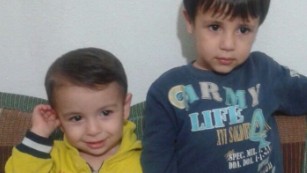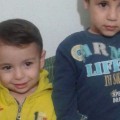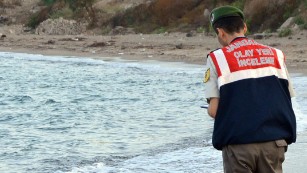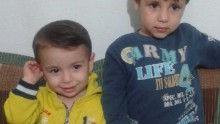Syrian toddler's dad: 'Everything I was dreaming of is gone'
Two-year-old Aylan Kurdi was born into a country eaten up by war. His parents, Abdullah and Rehen, only wanted a better life for Aylan and his 4-year-old brother, Galip, than they had in Kobani, Syria.
They wanted what anyone does -- what hundreds of thousands of people fleeing violence, who have flooded Europe, want -- a safe home.
Trying to make that simple but treacherous dream a reality, Aylan, his brother and mother drowned. An image of the boy's body on a Turkish beach shook social media and outraged leaders in Canada, where the family had hoped to wind up, and many others watching the European migrant crisis unfold.
Young refugee's body washes ashore in Turkey




On Thursday, four Syrian citizens were taken into custody, suspected of human trafficking in connection with their deaths and those of nine others whose bodies washed ashore, according to Turkey's semiofficial Anadolu news agency.
Abdullah, the only Kurdi family member to survive the trip, says he has nothing left to live for.
"I don't want anything else from this world," he told CNN on Thursday. "Everything I was dreaming of is gone. I want to bury my children and sit beside them until I die."
Trying to get to Canada
Canadian Member of Parliament Fin Donnelly told CNN partner CTV that Abdullah's sister Tima Kurdi, who lives in Vancouver, had filed refugee paperwork to obtain permission for the family to live in Canada, but the application had been rejected in June.
But Tima Kurdi, in a later interview Thursday with CTV, said she had actually filed paperwork for her other brother, Mohammed, and that was rejected.
The Department of Citizenship and Immigration Canada confirmed Thursday it never received an application for Abdullah.
"An application for Mr. Mohammad Kurdi and his family was received by the department but was returned as it was incomplete as it did not meet regulatory requirements for proof of refugee status recognition," the agency announced. "There was no record of an application received for Mr. Abdullah Kurdi and his family. Canada did not offer citizenship to Mr. Abdullah Kurdi."
Tima Kurdi said she was hoping to personally put up the money to sponsor Mohammed and his four children to come to Canada. They are now in Germany.
Meanwhile, she had been sending money to Abdullah. She presumes that Abdullah used those funds to try to get his family to Canada. Tima knew of his plans to take the dangerous voyage, she said, and she recalled a phone call with Abdullah's wife in which Rehen said she was afraid to travel by water.
I'm so scared of the water," Tima recalled her sister-in-law saying. "I don't know how to swim."
The world learned of Aylan's death when a photo of the drowned boy was shared widely on social media, many using the hashtag #KıyıyaVuranİnsanlık or "Flotsam of Humanity" in Turkish.

The body of a drowned baby washes up on Turkish beach
It shows the toddler on his stomach, face down on a beach in Turkey. He looks like he's sleeping the way so many children his age do, with their bottoms raised and heads gently to the side.
The journalist who shot the photo expressed the outrage, despair and helplessness that it would go on to inspire in many people who saw it.
"There was nothing to do except taking his photograph," said Nilufer Demir, who works for Turkey's Dogan News Agency. "There was nothing to do. And that is exactly what I did. I thought this is the only way I can express the scream of his silent body."
Many are demanding to know what went wrong. Why did this child, his brother and mother have to die? Wasn't there some way to give them that safer life?
A trip tried several times
Abdullah Kurdi says he boarded a small fiberglass boat in Turkey with 12 people on board. The vessel was manned by two smugglers, a Turk and a Syrian, he said. It was very crowded.
"I told him, 'Should we empty the boat? Should I get off with my wife and child?'"
One of the smugglers replied, "'No, no, it is good,'" Abdullah recounted.
Large waves began crashing against the boat soon after the refugees set out.

Europe's refugee crisis in 20 photos



Kurdi again raised his concern but the smuggler insisted, "It is guaranteed. Guaranteed."
Shortly afterward, the smuggler jumped overboard and swam toward shore as the waves pounded harder and higher.
Kurdi tried to take control of the boat but it capsized in the rough waters.
"I tried to reach for my wife and children," he said. "I was in the water for 20 minutes. One person after another was dying."
Turkish rescue teams were able to save some people aboard the boats, Turkey's governor's office said. Two men and a child who were traveling in the group are missing.
Originally from Syria's capital, Damascus, Abdullah said he was trying to get to Sweden by way of Greece.
"I don't want anything from anyone anymore," he said. "I will sit by my wife and children and read them Quran until I die, God willing."
How you can help in the migrant crisis
'No humanity'
Some said they hoped the images of the boy lying on the beach and his limp body being scooped up by a rescue worker could be a turning point in the debate over how to handle the surge of people heading toward Europe.
Nadim Houry, Human Rights Watch deputy director for the Middle East and North Africa, described the pictures as "haunting."
"Biggest indictment of collective failure," he wrote.
News Courtesy: www.cnn.com











